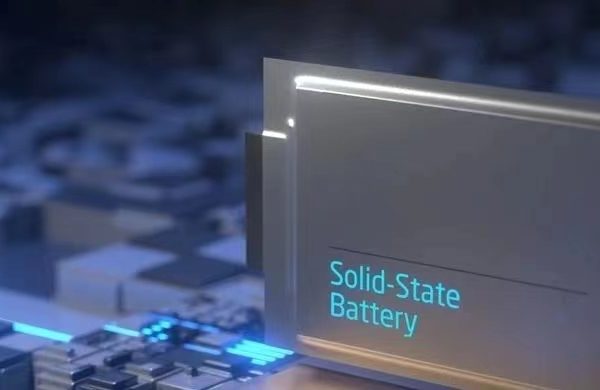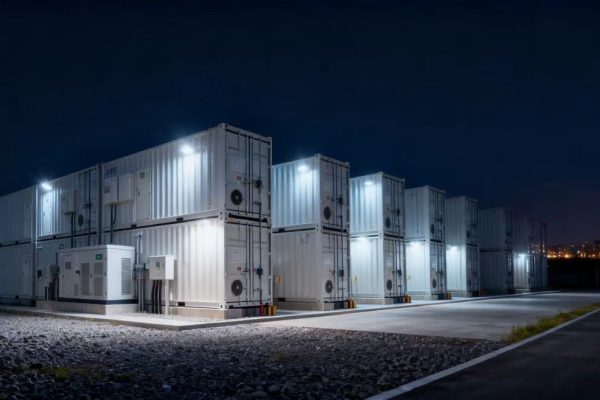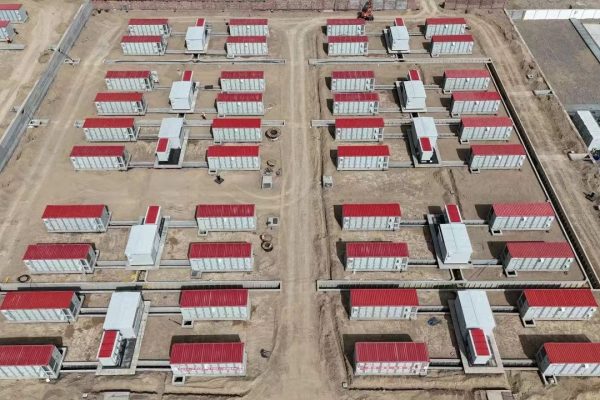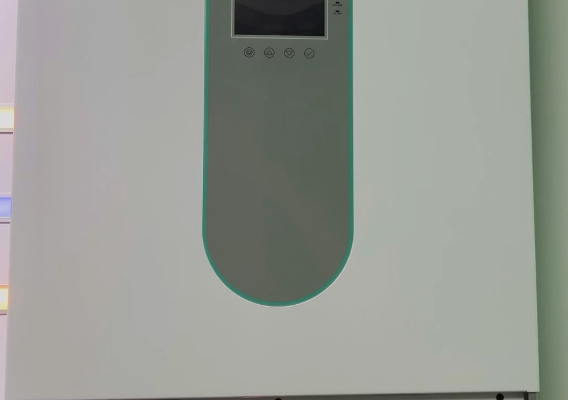In any commercial or industrial (C&I) energy storage project, the Power Conversion System (PCS) plays a central role — it’s the brain and muscle that controls energy flow between the battery, grid, and loads.
Choosing the right PCS (sometimes called a bidirectional inverter) is critical for ensuring efficiency, stability, and compatibility across multiple components such as PV systems, EMS software, and grid interconnection.
This article explains what makes a PCS “compatible,” explores major PCS configurations, and outlines how to select the best PCS for commercial energy storage systems (ESS).
1. What Is a PCS in Energy Storage Systems?
A Power Conversion System (PCS) manages the bidirectional conversion between DC power from batteries and AC power for the grid or loads.
Basic Functions:
- Convert DC → AC for discharge to loads or grid
- Convert AC → DC for charging the battery
- Manage reactive power compensation (VAR)
- Support grid stability and frequency control
- Communicate with Battery Management System (BMS) and Energy Management System (EMS)
[Grid / PV] ↔ [PCS] ↔ [Battery Rack]
↓
[Commercial Loads]
A well-chosen PCS ensures:
✅ Efficient energy transfer
✅ Smooth operation with PV and EMS
✅ Compliance with local grid standards
2. PCS vs. Inverter: What’s the Difference?
While often used interchangeably, PCS and inverter have nuanced differences:
| Aspect | PCS (Bidirectional) | Inverter (Unidirectional) |
|---|---|---|
| Direction | AC↔DC (charge & discharge) | DC→AC only |
| Use Case | Energy storage systems | PV generation |
| Control | Grid-forming & grid-following | Grid-following |
| Example | Battery-based microgrid | Solar inverter |
In short, all PCS units are inverters, but not all inverters can function as PCS.
3. Key PCS Configurations
3.1 AC-Coupled PCS
Connects to the AC bus of the facility or grid.
- Each system (PV, ESS, grid) has its own inverter.
- ESS charges/discharges through the AC connection.
Advantages:
✅ Simple integration with existing PV systems
✅ Ideal for retrofits
Disadvantages:
⚠️ Multiple energy conversions (lower efficiency)
⚠️ Slightly higher system losses
Typical Use Case:
Add-on storage for factories or commercial buildings with existing PV arrays.
3.2 DC-Coupled PCS
Connects PV arrays and battery on a shared DC bus.
- The PCS manages both solar input and battery charge/discharge.
- Fewer conversion steps, higher overall efficiency.
Advantages:
✅ 3–5% higher energy yield
✅ Compact and cost-effective
✅ Ideal for new PV + Storage projects
Disadvantages:
⚠️ Complex DC bus design
⚠️ Requires precise component matching
Typical Use Case:
Integrated hybrid systems for new commercial facilities.
3.3 Hybrid PCS
Combines both AC and DC coupling in one unit.
- Can connect to grid, battery, and PV simultaneously.
- Offers highest flexibility for diverse system layouts.
Advantages:
✅ Handles PV, battery, and grid power concurrently
✅ Simplifies installation and control
✅ Ideal for commercial microgrids
Disadvantages:
⚠️ Higher initial cost
⚠️ More complex firmware configuration
4. Key Technical Parameters for PCS Selection
When comparing PCS options, buyers should focus on several technical parameters that directly affect system performance.
| Parameter | Description | Recommended Range (C&I) |
|---|---|---|
| Rated Power | Maximum continuous output | 30 kW – 1000 kW |
| AC Voltage | Nominal grid connection voltage | 380V / 400V / 480V |
| DC Voltage Range | Battery voltage window | 600V – 1500V |
| Efficiency | Conversion efficiency | ≥ 97% |
| THD (Total Harmonic Distortion) | Power quality indicator | < 3% |
| Power Factor Control | Reactive power support | -0.9 to +0.9 |
| Communication | BMS/EMS protocol | MODBUS TCP, CAN, RS485 |
| Grid Standards | Regional compliance | IEC 61850, IEEE 1547, UL 1741 |
💡 Tip: When in doubt, choose PCS models certified for UL 9540 / IEC 62933 and capable of bidirectional operation.
5. Communication Compatibility
A critical (and often overlooked) factor is protocol compatibility between PCS, battery, and EMS.
Typical Communication Interfaces:
- CAN Bus: Battery communication (real-time voltage, SOC, alarms)
- RS485 / MODBUS: PCS to EMS or monitoring system
- Ethernet / TCP/IP: Remote control and cloud connection
Why Compatibility Matters:
- Ensures accurate charge/discharge control
- Prevents false alarms and communication dropouts
- Enables full remote monitoring and firmware upgrades
Example:
If your LFP battery uses MODBUS RTU, ensure your PCS can map these registers correctly — otherwise, EMS data may be inaccurate or incomplete.
6. Cooling and Installation Form Factors
PCS units for commercial ESS are usually:
- Wall-mounted (≤ 100 kW)
- Cabinet-mounted (100–500 kW)
- Containerized (> 500 kW)
Cooling Methods:
- Forced Air Cooling: Compact and cost-effective for indoor systems.
- Liquid Cooling: Higher power density, better for outdoor or high-temperature environments.
⚙️ Example: A 500 kW PCS with liquid cooling can operate continuously in 45°C environments — critical for tropical or desert installations.
7. Single vs. Three-Phase PCS
| Feature | Single-Phase PCS | Three-Phase PCS |
|---|---|---|
| Power Range | < 30 kW | 30–1000 kW |
| Use Case | Residential, small office | Commercial, industrial |
| Grid Support | Limited | Full reactive power support |
| Parallel Capability | Rare | Common (up to 4–8 units) |
For C&I storage, three-phase PCS is standard, enabling:
- Load balancing
- Parallel redundancy
- Smart control with EMS
8. Typical PCS Brands and Compatibility Examples
| Brand | Country/Region | Typical Range | Known for |
|---|---|---|---|
| Sungrow | China | 50–500 kW | High efficiency, wide BMS compatibility |
| GoodWe | China | 30–250 kW | Compact hybrid solutions |
| Huawei | China | 100–1000 kW | Integrated AI-based EMS |
| Sinexcel | China | 60–500 kW | Modular PCS with strong grid performance |
| Delta / SMA | Germany / Taiwan | 50–500 kW | Proven reliability and grid compliance |
| TBEA / Kehua | China | 100–1500 kW | Industrial-grade hybrid PCS |
| Socomec / Eaton | EU / US | 100–500 kW | Safety and high protection standards |
✅ Tip for Buyers:
Always request compatibility test reports (battery–PCS protocol validation) before finalizing procurement.
9. Parallel Operation and Scalability
In commercial ESS projects, power demand often grows over time.
Choose a PCS that supports parallel operation and modular expansion.
Features to check:
- Master–slave synchronization
- Load sharing (active power and reactive power)
- Anti-islanding and fault ride-through compliance
Example:
Four 250 kW PCS units connected in parallel → total 1 MW system.
If one unit fails, others continue operating with minimal downtime.
10. Safety Features to Prioritize
Commercial ESS PCS should meet high safety standards, including:
- Anti-islanding protection
- DC insulation monitoring
- Ground fault detection
- Overvoltage and surge protection
- Emergency stop interface
- Arc-fault circuit interruption (AFCI)
Compliance with UL 9540A, NFPA 855, and IEC 62933 ensures safe and stable long-term operation.
11. Integration with EMS and Grid
The PCS must seamlessly integrate with the Energy Management System (EMS) for functions such as:
- Load management
- Peak shaving and demand response
- Frequency regulation
- Time-of-use optimization
For grid-tied commercial ESS, the PCS must also meet utility interconnection standards (e.g., IEEE 1547, GB/T 34120).
🔌 Example: In a demand charge reduction project, EMS signals the PCS to discharge during 5–9 PM peak, automatically shifting to grid-charging at midnight — all controlled through MODBUS commands.
12. Example: 500 kWh Commercial ESS
System Design:
- Battery: 500 kWh LFP rack system (768V nominal)
- PCS: 250 kW × 2 parallel (AC 400V, 98% efficiency)
- Application: Peak shaving + backup for industrial plant
Results:
- Demand charges reduced by 35%
- PCS maintained <3% THD
- Zero communication errors (verified MODBUS handshake)
13. Common Compatibility Mistakes
- Ignoring voltage range mismatches:
Battery nominal 768V, PCS range 600–800V — fine.
But 512V battery won’t work with 600V min PCS input. - Assuming all MODBUS protocols are the same:
Register maps differ between battery brands; always test integration. - Undersizing PCS for peak load:
Always size PCS at 10–20% higher than rated discharge power to handle transient surges. - Neglecting cooling clearance:
Poor ventilation can lead to derating or shutdown in hot climates.
14. Future Trends in PCS Technology
- Wide-Bandgap Semiconductors (SiC, GaN):
Improve conversion efficiency by 1–2%. - AI-Based Control:
Predictive algorithms optimize charge/discharge scheduling. - Grid-Forming PCS:
Enable true islanded operation for microgrids. - Liquid-Cooled Modular PCS:
Increasing adoption in large-scale commercial and containerized ESS.
🚀 Expect PCS technology to shift from passive converters to active grid-supporting assets over the next 3–5 years.
Choosing a compatible PCS is crucial for the success of any commercial energy storage project.
It determines not just system efficiency, but also safety, scalability, and integration flexibility.
✅ Key Takeaways:
- Ensure voltage, protocol, and EMS compatibility.
- Select PCS with ≥97% efficiency and multi-protocol communication.
- Verify certification and thermal design for local conditions.
- Prefer modular, parallel-ready PCS for future expansion.
With the right PCS, commercial ESS systems can achieve optimal performance, reduced costs, and long-term reliability — turning energy storage from a technical challenge into a strategic business advantage.









